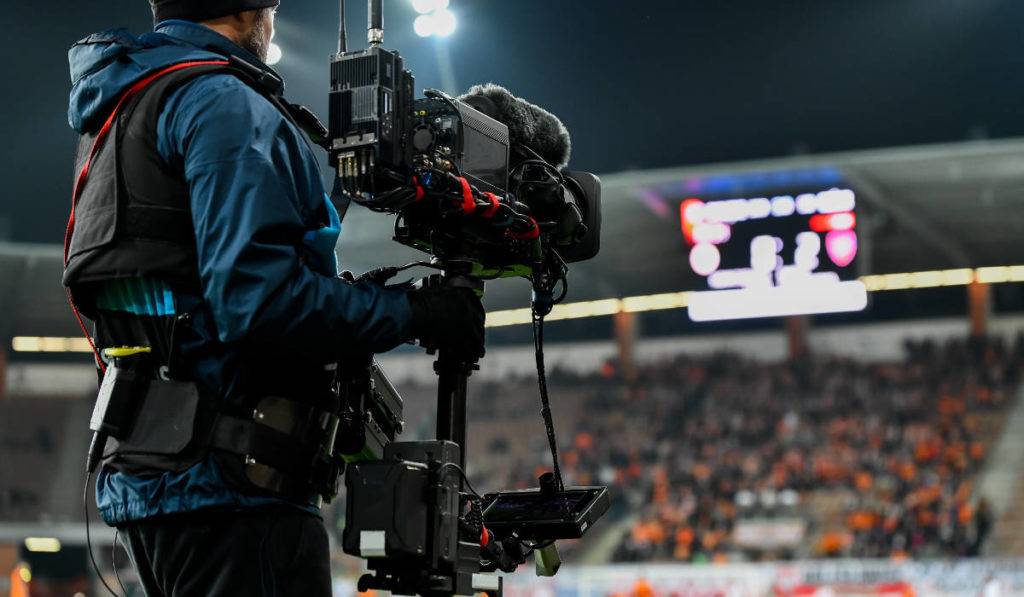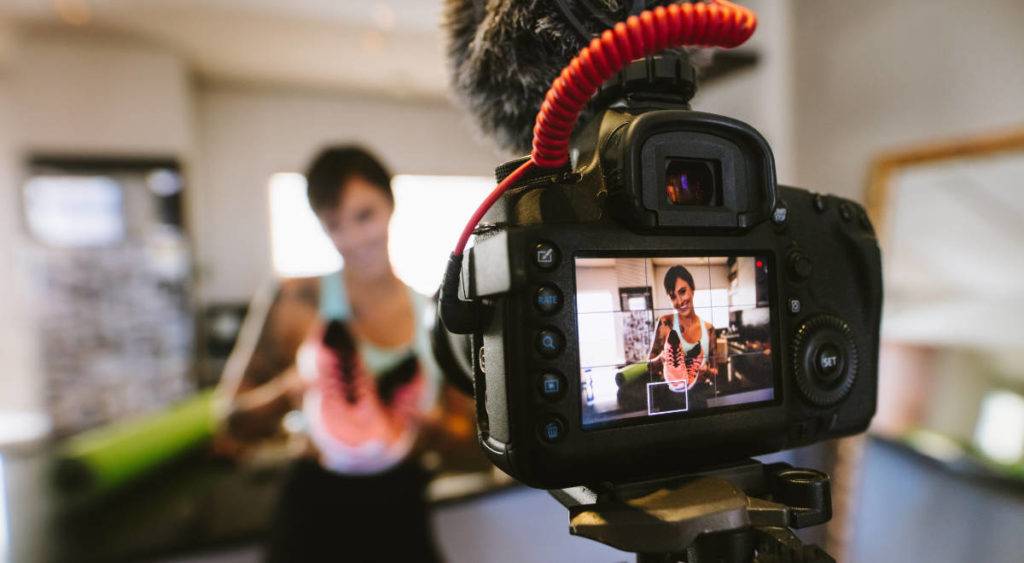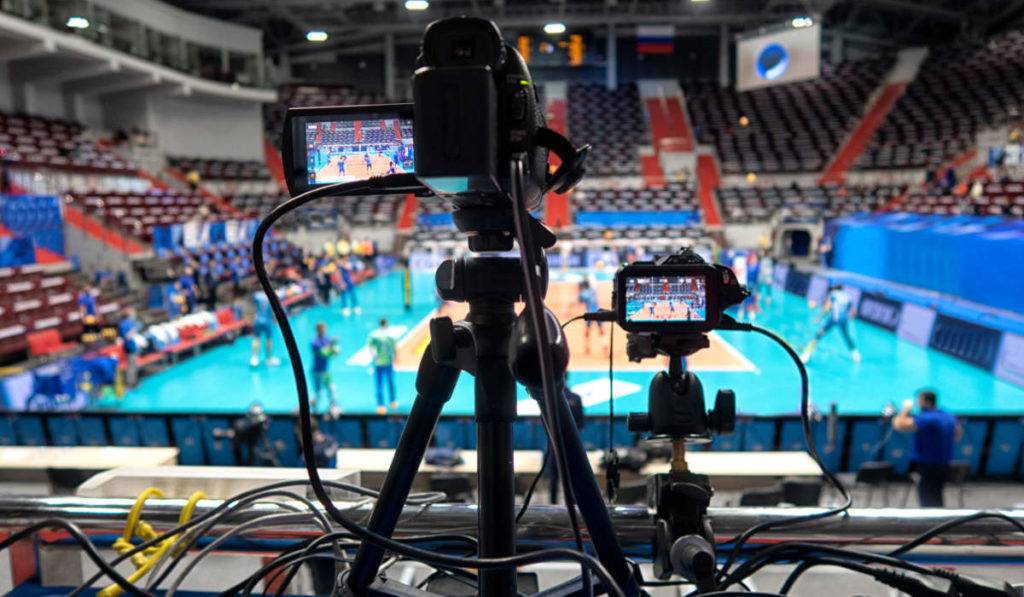Both DAM and MAM systems are essential for any sports marketing team trying to organize and store large volumes of digital assets. But which one is most appropriate for your organization’s needs — DAM vs MAM?
Both digital asset management (DAM) and media asset management (MAM) systems are there to help you manage images, video files, podcast episodes, and other digital media assets. However, they’re two separate things that can easily be confused if you’re not a digital asset manager.
Let’s explore some key differences between DAM vs. MAM so you can decide which is appropriate.

What Is the Difference Between DAM and MAM?
Although we’ll mainly be focusing on the differences between DAM and MAM systems, it’s important to note that they do share many similarities. And sometimes a category or label is applied based on the software vendor’s target market.
Ultimately, both types of asset management system aim to provide your creative teams with the features they need to effectively manage both brand, product, and event media assets they’ll frequently use for fan engagement, digital promotion, and sponsorship programs.
When you’re working in sports marketing, you are constantly dealing with recordings of games, pictures of sports stars, and social media posts to share with your audience – which all need to be stored somewhere.
Whether you use a MAM or DAM to manage your multimedia assets, both platforms should give your team access to all the assets you need and the power to control how they’re managed. However, some key differences separate the two platforms.
DAM systems usually offer an array of brand management capabilities. They can be used as a library asset management system for sales and marketing teams who need a centralized location for digital media assets. These include photos, short-form videos, graphics and other digital marketing materials.
On the other hand, MAM systems are typically considered a media library that facilitates workflows for linear long-form video and audio files. This type of digital content can be hard to manage. This difficulty is why many marketing teams in the sports and broadcast industry gravitate towards an in-depth management tool that allows for video content storage, multimedia production, and video editing.
The choice between MAM and DAM will ultimately come down to the needs of your marketing team and organizational requirements. Here’s more information about the two platforms, so you can decide which will work best for you.

Benefits of a Digital Asset Management System
If you think that digital asset management systems may be perfect for your needs, you can enjoy a range of benefits that come with one of these systems.
Some of the main benefits of using digital asset management software include:
- You can keep your team’s costs low by centralizing all your sports recordings and audio files into one place alongside video editing suites
- You can keep track of how and where your video and multimedia assets are used
- Your creative teams can quickly search through thousands of existing assets
- You can efficiently distribute video assets and rich media to other team members working internally
- DAM solutions make collaboration between teams more effortless and effective
- You can ensure brand integrity through simple quality assurance and brand guidelines
Here’s more information on finding the best digital asset manager for your sports team, league or national association.
Drawbacks of a Digital Asset Management System
Sports marketing teams often find that using a digital asset management system means it’s easier to share and manage graphics and media, keep versions controlled, and provide a centralized place to access and store media for the in-house creative team and external marketing agency. DAM’s provide a collaborative experience for graphic designers and creatives.
But, just because a tool provides many benefits doesn’t mean that it’s without some drawbacks and challenges, especially for those in the sports industry.
Some of the main challenges you may experience when using a digital asset management system are:
- Lack of access – not enough people can get to the assets they need
- Speed – DAMs are great storing of brand assets, but aren’t designed for real-time access to high volumes of new digital media assets
- It’s difficult or impossible to share short-form media clips with broadcast rights holders
- You may struggle with visibility and control if you don’t find an effective way to store your branded videos, smaller files, and video files
- If you use a range of video and multimedia production tools, you may struggle to integrate your digital asset management (DAM) systems
- If your content creation teams don’t implement tools to manage the content lifecycle of your digital assets, you may find it impossible to use your assets
- Scalability can sometimes be an issue in digital asset management unless you invest a lot of time into security, compliance, and other advanced features
- To ensure brand consistency, you need to make sure that employees receive training on how to use the central repository effectively
- Governance and standards issues, if you don’t implement thoughtfully designed production workflows and permissions for your team
Use Cases for DAMs
One of the main use cases for DAMs is within a sales and marketing team. For example, if you’ve got a big sporting event coming up soon that you want to promote, having an effective system to manage digital assets like audio files is crucial for your social media and creative teams.
Using digital asset management (DAM), you can quickly check images from a recent shoot for your social media campaign. You can employ graphics tools to edit footage from the event. And you can tap into metadata search to easily locate assets before and after the event for use in various marketing materials.
Unlike text-based documents, marketing teams can get the most out of their digital assets with a DAM system that allows for manual logging of files, access control across the department, and impressive video production tools.

Benefits of a MAM System
If, on the other hand, you think that a media asset management system would be perfect for your team, here are some of the main benefits you can enjoy when using this type of platform.
- Media asset management systems help boost the ROI of your content, making it reusable by more constituents – media that is kept in storage isn’t as valuable as media that’s shared widely
- Media asset management (MAM) can improve the productivity of your creative teams and their workflows through their ability to generally manage video assets and automate tasks
- Using media asset management systems, you can produce and organize video clips, rich media, and other digital file types at scale
- MAM solutions allow for simplified collaboration within production teams and between asset managers
- Whether you’re working with large files or new assets, a MAM system is a great solution for creating a central location for your video production assets
Drawbacks of a Media Asset Management System
Media asset management (MAM) is an effective tool that helps teams to store and organize their digital assets.
But, when looking at DAM versus MAM, you should also be aware of the limitations and drawbacks of storing digital assets on these platforms. Some of the drawbacks of media asset management include the following:
- Digital assets can quickly become hard to maintain and organize when there’s no practical way to manage specific files
- It’s difficult or impossible to share short-form media clips with broadcast rights holders
- When multiple teams are working on editing or video production, some media asset management can block access to content or media prohibiting collaboration or parallel workflows
- If automation is not integrated with media asset management, it can be hard to create a consistent or simplified for storing, editing and sharing broadcast media
Use Cases for MAMs
Suppose you’re a sports marketer responsible for producing social media content, podcast episodes, and other video content. Media asset management is the perfect solution for your content needs.
With media asset management (MAM), you can easily store all sound bites and video files in one place. All while still having access to the video production tools your production teams need to get everything prepped and ready for distribution.
Whether you need to distribute smaller files or create a new video for your organization’s YouTube channel, using a MAM tool for your visual content is a must.
Managing your social media content is extremely important, particularly since 75% of people use social media to research products before making a purchase. This reality is why having a ready repository of images and videos is crucial for social media marketing teams.

DAM vs MAM: Which System Is Best for Your Organization?
Ultimately, deciding between a DAM and a MAM will depend on what’s right for your organization.
After looking inwardly and discovering the needs of your team, then you can see which, out of MAM and DAM, will most closely align with your requirements. Both MAM and DAM tools are highly efficient tools that can completely transform any marketing team – but more importantly, with increased access to media, solutions like Greenfly can dramatically increase the importance of value of digital media to the entire organization.
Sports properties should carefully consider whether to select a Digital Asset Management (DAM) or a Media Asset Management (MAM) system based on their specific needs and priorities. First, Identify the current challenges your teams are facing, what assets are used most commonly in your organization and the existing tools that your marketing teams utilize when working with digital and media content. Here are some key points to consider:
- Content Type: DAM systems are designed to manage and organize a wide range of digital assets, including images, videos, documents, and more. On the other hand, MAM systems are specifically tailored for managing rich media assets such as videos, audio files, animations, and graphics. If your organization primarily deals with rich media content, a MAM system might be the better fit.
- Workflow Complexity: DAM systems typically provide robust features for organizing, storing, and retrieving assets, along with advanced metadata management and collaboration capabilities. They are suitable for organizations with complex content workflows, extensive asset libraries, and diverse user roles. MAM systems, on the other hand, focus more on media production workflows, providing tools for editing, transcoding, versioning, and distribution of media assets. If your organization requires comprehensive media production capabilities, a MAM system may be more suitable.
- Integration and Scalability: Consider the integration capabilities of the system with your existing tools and technologies. DAM and MAM systems often offer integrations with popular creative software, marketing automation platforms, content management systems (CMS), and cloud storage providers. Additionally, scalability is important to accommodate future growth and increasing content demands.
- Budget and Resources: Evaluate the cost and resources required to implement and maintain a DAM or MAM system. DAM systems, being more general-purpose, often offer a broader range of features and can be more expensive. MAM systems, with their specialized focus on media production, may come with higher costs for advanced video editing capabilities and hardware requirements.
Ultimately, the decision between a DAM and a MAM system depends on the specific needs, workflows, and priorities of the organization. It’s important to thoroughly assess the requirements and capabilities of each system to make an informed choice that aligns with your organization’s goals.
Greenfly: DAM or MAM?
At Greenfly, we know managing your digital media is a crucial task that should make the most of efficient tools and platforms. This is why we’ve created a range of solutions targeted specifically toward marketers in sports and beyond. Offering both digital media collection and content distribution features, we can help you set up functional and productive platforms that work for your team.
Greenfly’s platform acts as a DAM when you don’t have one, but can also connect to the most popular DAMs and MAMs used by sports and entertainment organizations if you’re already using one.
Greenfly’s cloud-based SaaS platform is more than just a typical DAM. It helps sports properties and other organizations organize their assets, upload files and maximize the value of every asset they have by giving more people access to content. And, it’s designed to deliver assets in real time. Our platform makes it easy to automate tasks and take the stress out of collecting, storing and distributing digital media assets — no matter the volume.
To find out more, request a demo with our team today.

MAM vs DAM FAQ
What Is a Media Asset Manager?
A media asset manager is a platform you integrate with your current workflows to make managing your digital assets easy.
Fuelled with efficient management capabilities and automation options, a good media asset manager should help your team become more productive and help them get the most out of your content.
What Is MAM Storage?
MAM (media asset management) is a storage solution that acts as a media library for content like videos, photos, sound clips, etc.
What Is a DAM in Media?
DAM stands for digital asset management and is a platform that provides a central hub for all the marketing materials you might need, like logos, social media graphics, etc.


